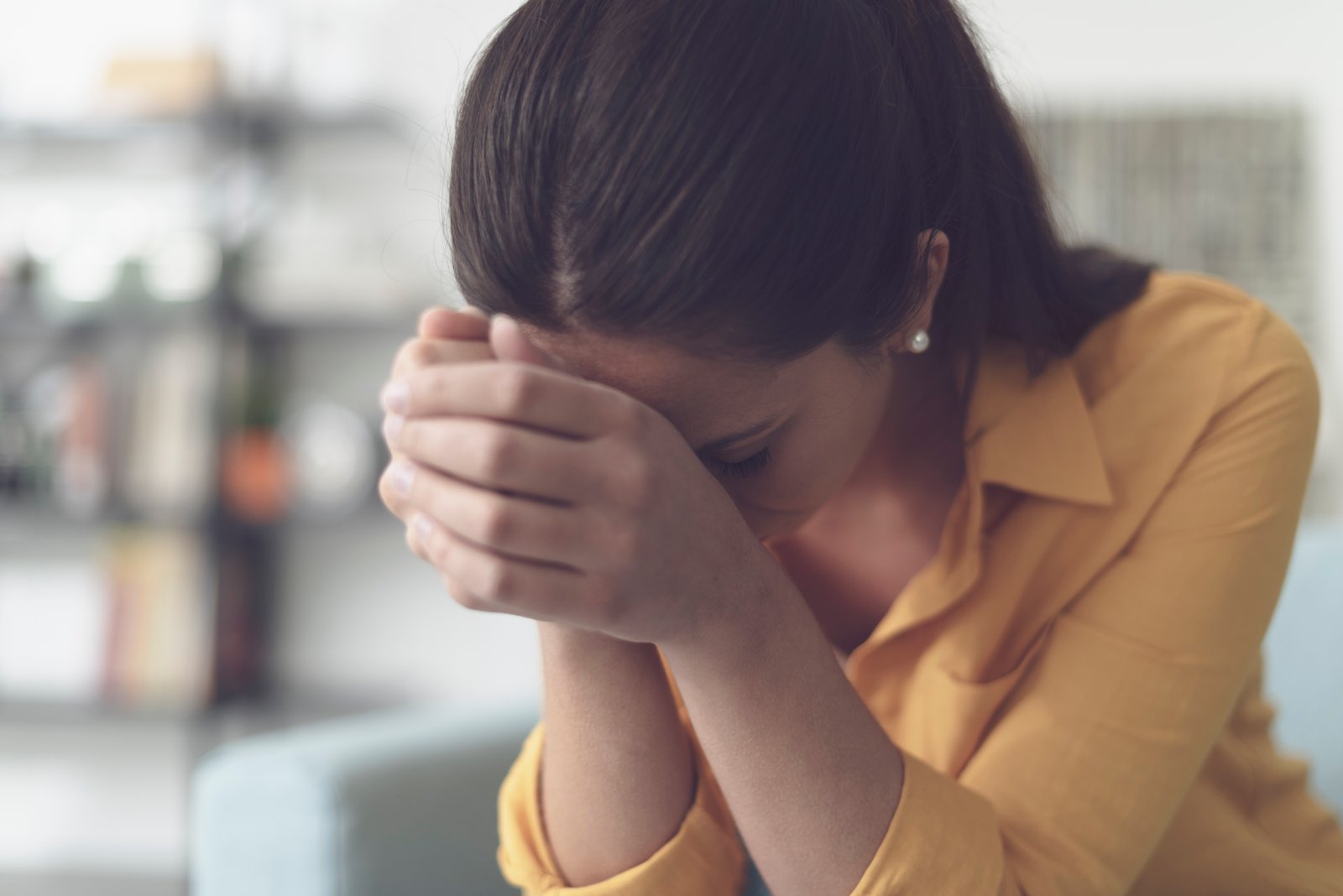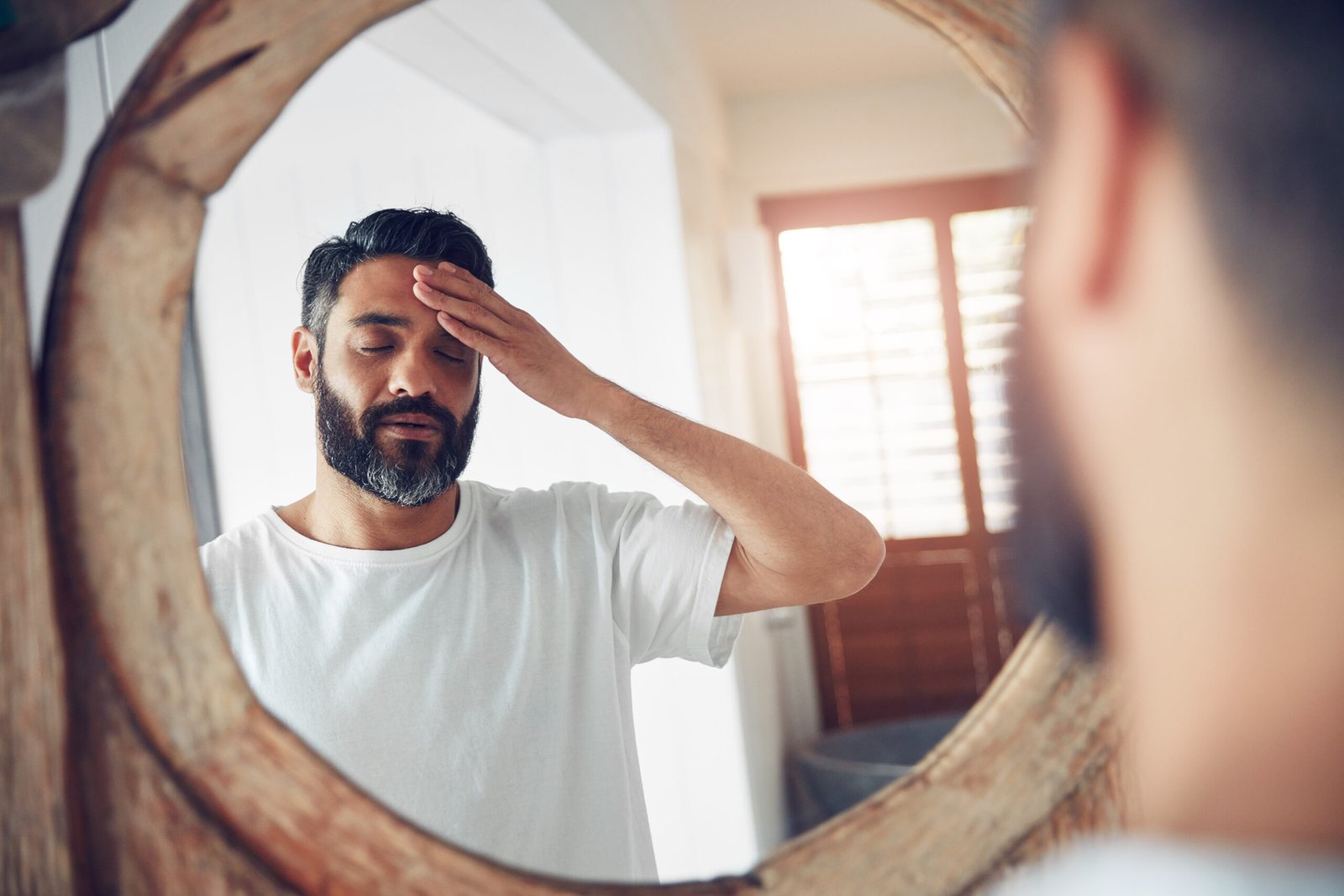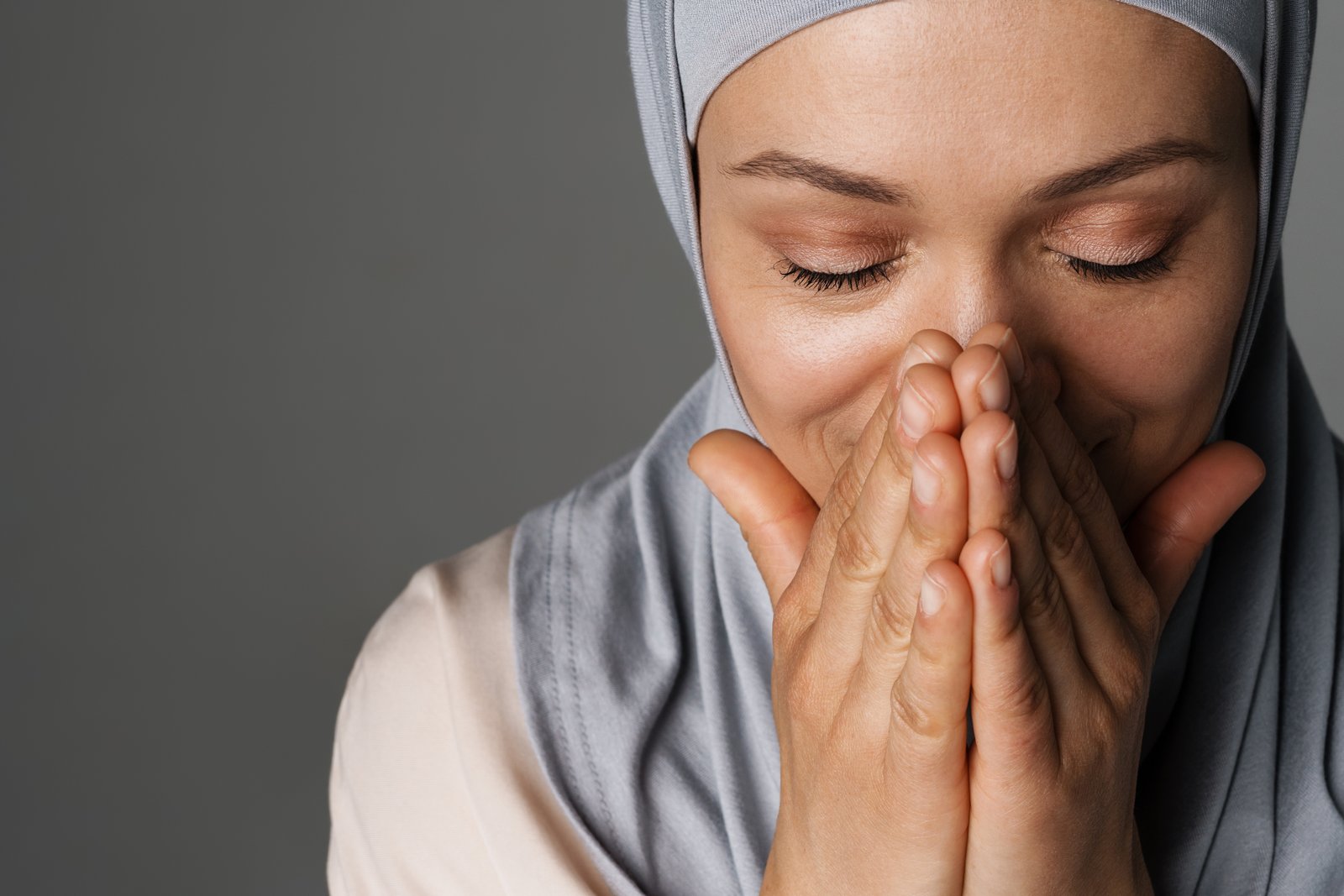Anxiety, often brushed off as mere nerves or stress, is in reality a complex and multifaceted condition that affects millions worldwide. It’s far more than the occasional worry or fear; anxiety can be an overwhelming wave of emotions that dictates one’s way of life, decision-making, and overall health. Understanding anxiety requires us to look beyond its surface manifestations and delve into its roots, recognizing it as a psychological and physiological response to perceived threats. This response can become maladaptive, turning what is meant to be a survival mechanism into a daily struggle.
The term ‘anxiety’ encompasses a range of disorders, each with its own specific triggers and symptoms, yet all share a common ground: the excessive and persistent worry that doesn’t seem to have a direct cause. From generalized anxiety disorder (GAD), characterized by chronic anxiety without any apparent reason, to panic disorders marked by sudden bouts of terror, the spectrum of anxiety disorders reveals the complexity of this condition. Understanding these nuances is the first step towards demystifying anxiety and approaching it with the empathy and seriousness it deserves.
The Physical and Psychological Effects of Anxiety
Anxiety is not just a state of mind; it manifests physically, weaving its way into the fabric of our daily lives through a variety of symptoms. Physically, it can quicken the heartbeat, cause sweating, trembling, dizziness, and even lead to chronic conditions such as heart disease and diabetes. The psychological effects, however, are equally daunting. Anxiety can cloud judgment, distort perception, and significantly impair one’s ability to think and react. It can lead to sleep disorders, diminish the capacity for concentration, and, in severe cases, result in panic attacks that leave individuals feeling helpless and terrified.
The interplay between the mind and body in cases of anxiety illustrates a vicious cycle where psychological distress exacerbates physical symptoms, which in turn, feeds back into the psychological turmoil. This interconnection underscores the importance of a holistic approach to managing anxiety, one that addresses both the mind and the body. It’s this very realization that set the stage for my journey towards discovering an anxiety hack that not only changed my life but offered a new lens through which to view and combat anxiety.
My Journey with Anxiety
The Early Signs and Ignorance
My journey with anxiety began long before I knew to name it. Like many, I mistook its early signs for mere personality quirks or temporary stress. The constant worry, the sleepless nights, and the inexplicable fears seemed like things I could simply ‘shake off’ with time. I laughed along with others at my ‘overthinking’ and ‘nervous energy’, unaware of the underlying condition that was slowly taking root. This period of ignorance wasn’t bliss; it was a silent struggle, one where I inadvertently normalized my discomfort and pushed through without seeking help or understanding.
Looking back, these early signs were a cry for help from my body and mind, signaling that not all was well. I experienced frequent heart palpitations, an overwhelming sense of dread over everyday activities, and an inability to relax or enjoy moments of peace. Yet, the societal stigma around mental health, combined with my own denial, led me to brush these symptoms under the carpet. I believed that acknowledging my anxiety would be admitting weakness, so I chose ignorance, a decision that would cost me greatly in the years to come.
The Turning Point: Acknowledging the Problem
The turning point in my journey came crashing down on an ordinary day that turned anything but ordinary. What began as a normal bout of worry spiraled into a full-blown panic attack, leaving me breathless, scared, and finally, starkly aware that what I was dealing with was not simply a case of ‘nerves’. It was a wake-up call, a moment of terrifying clarity that what I had been experiencing had a name: anxiety. This acknowledgment was not a moment of weakness, as I had feared, but a pivotal step towards reclaiming my life.
Acknowledging the problem opened the floodgates to a reservoir of emotions I had been damming up for years. It was frightening yet liberating to admit that I needed help, to say out loud that I was not okay. This realization marked the beginning of my true journey with anxiety—a path not just towards managing my symptoms but understanding the depths of my condition. Accepting my anxiety was the first step in a long journey of healing, self-discovery, and eventually, finding the hack that would change my life.
The Search for Solutions
Traditional Methods and Their Limitations
Once I recognized my battle with anxiety, the next logical step was seeking solutions. The conventional path led me to the well-trodden routes of medication and therapy. While these methods have undeniably helped countless individuals, my journey through them revealed their limitations alongside their benefits.
Medication: A Double-Edged Sword
Medication promised a quick fix, a way to dull the edges of my anxiety so I could function day-to-day. Initially, the relief was palpable; it was as if I had been given a new lease on life. However, this sense of relief was accompanied by side effects that ranged from mildly inconvenient to severely impacting my quality of life. The dependency on medication to feel ‘normal’ also left me questioning if I was truly healing or merely masking the problem. It was a double-edged sword: while medication managed my symptoms, it didn’t address the root cause of my anxiety.
Therapy: The Long Road to Self-Discovery
Therapy, on the other hand, offered a space for self-discovery and understanding. It was through the sessions with my therapist that I began to unravel the complex web of my thoughts and emotions. Yet, therapy was a journey with no clear end, a process that required patience, time, and, not insignificantly, a considerable financial investment. While I gained invaluable insights into my mental patterns, the slow pace of progress left me searching for additional ways to manage my anxiety in the here and now.
Alternative Approaches: Finding What Works for You
Determined to find a more holistic solution, I turned to alternative approaches that promised a different path to managing my anxiety. This exploration was guided by the understanding that healing is not one-size-fits-all and what works for one person may not work for another.
Meditation and Mindfulness: A New Perspective
Meditation and mindfulness offered me a new perspective on dealing with anxious thoughts. Instead of fighting against my anxiety, these practices taught me to observe my thoughts without judgment and let them pass. It was a profound shift from trying to control my anxiety to learning to coexist with it. This approach didn’t offer an immediate cure but provided me with tools to better navigate my anxious moments, reducing their intensity and frequency over time.
Physical Exercise: The Underrated Anxiety Reliever
Amid my search, I discovered the underrated power of physical exercise as an anxiety reliever. Regular physical activity, from yoga to running, became an outlet for the pent-up energy that anxiety often produced. It wasn’t just about the endorphins, though their mood-lifting effects were undeniable. Exercise also instilled a sense of discipline and achievement in me, contributing to a stronger, more resilient mindset that was better equipped to handle anxiety.
In my quest for solutions, I learned that managing anxiety is a multifaceted endeavor that often requires a combination of methods. It was a journey of trial and error, of finding what worked for me and integrating those practices into my life. This exploration eventually led me to a simple yet profound anxiety hack that would change everything.
The Anxiety Hack That Changed My Life
The Discovery: A Simple Yet Profound Technique
The life-changing anxiety hack came to me during a period of intense research and self-exploration, almost by accident. It was a technique rooted in the ancient practice of mindfulness, yet so simple that I initially doubted its efficacy. This hack was nothing more than focused breathing—specifically, a method called “4-7-8 breathing.” It involved inhaling deeply for 4 seconds, holding the breath for 7 seconds, and exhaling slowly for 8 seconds. The simplicity of this technique belied its power. By focusing on my breath, I was able to pull my mind away from anxious thoughts and anchor myself in the present moment.
The first time I tried it, I was skeptical. How could something as basic as breathing have any significant impact on something as complex as anxiety? To my surprise, the effect was immediate and profound. My heart rate slowed, my mind cleared, and for the first time in a long time, I felt a sense of calm wash over me. It was a pivotal moment, one that marked the beginning of a new chapter in my journey with anxiety.
Implementing the Hack: My Daily Routine
Encouraged by the immediate relief the 4-7-8 breathing technique provided, I began to implement this hack into my daily routine. It wasn’t a one-off solution but a tool that I could use anytime, anywhere.
Morning Rituals: Setting the Tone for the Day
My mornings began with a dedicated 10-minute session of focused breathing. Sitting in a quiet space, I would perform the 4-7-8 breathing technique, allowing myself to become fully immersed in the experience. This morning ritual became the foundation of my day, setting a calm and centered tone that helped mitigate anxiety from the start. It was as if I was fortifying myself against the day’s challenges, building a reservoir of calm that I could draw from as needed.
Incorporating the Hack Throughout the Day
Life, of course, is unpredictable, and anxiety can strike at any moment. This is where the true beauty of the 4-7-8 breathing hack shone through. Whether I was in a stressful meeting, stuck in traffic, or feeling overwhelmed by the day’s tasks, I could turn to my breathing. Just a minute or two of focused breathing was enough to ground me, offering a momentary reprieve and allowing me to approach situations with a clearer head.
Nighttime Routine: Ensuring a Restful Sleep
Anxiety often reared its head at night, turning what should have been a time of rest into a period of restless worry. Integrating the 4-7-8 breathing technique into my nighttime routine was transformative. By practicing focused breathing before bed, I was able to quiet the anxious thoughts and prepare my mind and body for sleep. This routine not only helped me fall asleep faster but also improved the quality of my sleep, contributing to an overall decrease in my anxiety levels.
This simple breathing hack, discovered almost by accident, became the cornerstone of my strategy for managing anxiety. It taught me the power of returning to the basics, to the very essence of living—breath. By incorporating this technique into my daily routine, I found a way to live with anxiety, not as an adversary, but as a manageable aspect of my life.
The Science Behind the Hack
Understanding the Psychological Mechanisms
The profound impact of the 4-7-8 breathing technique on anxiety isn’t just a matter of personal experience; it’s rooted in well-established psychological principles. This method leverages the power of mindfulness, a practice that encourages present-moment awareness without judgment. By focusing intently on the breath, one engages in a form of mindfulness meditation that can significantly reduce the swirling chaos of anxious thoughts. Psychologically, this practice helps shift the focus from past worries or future anxieties to the present moment, a state where anxiety has less grip. Furthermore, the act of deep, controlled breathing can serve as a signal to the mind that it’s time to calm down, effectively interrupting the feedback loop of anxiety.
Additionally, the 4-7-8 breathing technique can be seen as a form of self-regulation, allowing individuals to exert control over their physiological responses to stress. By consciously altering breathing patterns, one can navigate away from the edge of panic or intense anxiety, steering towards a more balanced emotional state. This sense of control is crucial for those suffering from anxiety, as it provides a tangible way to manage symptoms and reduce feelings of helplessness.
The Biological Basis: How It Affects the Brain
On a biological level, the 4-7-8 breathing technique influences the autonomic nervous system, which controls unconscious processes like breathing and heartbeat. This technique specifically targets the parasympathetic nervous system, often referred to as the “rest and digest” system, promoting relaxation and a state of calm. By extending the exhale longer than the inhale, the technique encourages the body to slow down, reducing heart rate and lowering blood pressure. This physical shift signals to the brain that the body is in a state of relaxation, not danger, thereby reducing the production of stress hormones such as cortisol and adrenaline.
Furthermore, focused breathing exercises have been shown to impact the brain’s neural pathways. Research suggests that regular practice can enhance the connectivity of the prefrontal cortex, the area associated with higher-order brain functions such as attention and decision-making. It also reduces activity in the amygdala, the brain’s fear center, which is often hyperactive in individuals with anxiety. This neural adjustment helps dampen the immediate stress responses and increases the overall resilience to stress over time.
The science behind the 4-7-8 breathing technique unveils how a simple act of controlled breathing can have far-reaching effects on our psychological and physiological wellbeing. It’s a testament to the power of breathing not just as a life-sustaining process but as a tool for profound mental health improvement. This understanding not only validates the efficacy of the technique but also highlights the interconnectedness of mind and body in the journey towards managing anxiety.
Measurable Changes and Lasting Effects
Immediate Improvements I Noticed
Adopting the 4-7-8 breathing technique into my daily routine yielded immediate, noticeable improvements that marked the beginning of a significant shift in how I managed my anxiety. Initially, the most apparent change was in my physical reactions to stress. Where my heartbeat would once accelerate, leaving me flustered and overwhelmed, I found it easier to maintain a steadier, more controlled rhythm through focused breathing. This physical calmness quickly translated into a clearer state of mind, enabling me to approach stressful situations with a level of composure I hadn’t experienced before.
Another immediate improvement was in my sleep quality. The nighttime routine of practicing this breathing method allowed me to quiet the relentless stream of anxious thoughts that previously kept me awake. Falling asleep became less of a nightly struggle, and the quality of my rest improved significantly, leaving me more refreshed and alert in the mornings.
Long-Term Benefits: A Life Transformed
The long-term benefits of integrating the 4-7-8 breathing technique into my life have been transformative. Over time, what began as a simple tool for managing moments of anxiety has evolved into a fundamental part of my overall mental health strategy. One of the most profound changes has been in my general anxiety levels. While anxiety is still a part of my life, its intensity and frequency have diminished. I’ve developed a resilience that allows me to face challenges with a sense of calm and confidence I never thought possible.
Beyond the immediate effects on anxiety, this practice has enhanced my overall wellbeing. The discipline of daily mindfulness and focused breathing has spilled over into other areas of my life, encouraging healthier habits and a more proactive attitude towards my health. I’m more present in my relationships, more engaged in my work, and more at peace with myself. This holistic improvement has underscored the importance of mental health practices not just for managing disorders like anxiety but for fostering a life of balance and fulfillment.
Perhaps the most lasting effect has been the shift in my perspective towards anxiety itself. Instead of viewing it as an enemy to be vanquished, I see it as a signal, a part of my emotional spectrum that requires attention and care. This shift in mindset, facilitated by the daily practice of the 4-7-8 technique, has been instrumental in my journey towards not just managing anxiety but thriving in spite of it.
Sharing the Hack with Others
How to Get Started with the Hack
Embarking on the journey of utilizing the 4-7-8 breathing technique to manage anxiety is a straightforward process, accessible to anyone at any time. To get started, find a quiet, comfortable place where you can sit or lie down without interruptions. Close your eyes to help focus your attention inward. Begin by gently placing one hand on your belly and the other on your chest, a physical reminder to breathe deeply into your diaphragm. Inhale quietly through your nose for a count of four, hold the breath for a count of seven, then exhale completely through your mouth, making a whoosh sound, for a count of eight. Repeat this cycle for four breaths and gradually increase the number of cycles as you become more comfortable with the practice.
This technique doesn’t require any special equipment or environment, making it an accessible tool for anyone looking to manage moments of anxiety. It’s recommended to start practicing twice a day, ideally in the morning and before bedtime, to familiarize your body and mind with the breathing pattern.
Tips for Making the Hack a Habit
Making the 4-7-8 breathing technique a consistent habit requires patience and commitment. Set specific times for your practice, such as incorporating it into your morning routine or using it as a wind-down activity before sleep, to build consistency. Utilize reminders on your phone or sticky notes in visible places as cues to practice. It can also be helpful to associate the habit with a specific trigger, such as doing the breathing exercises after brushing your teeth. This can help in forming a stronger habit loop.
Keep a journal of your experiences, noting any changes in your anxiety levels or overall well-being. This reflection can serve as motivation and a tangible record of the positive impact the technique has on your life. Additionally, practice mindfulness throughout the day, not just during your designated breathing exercises, to further embed this approach into your daily life.
Adjusting the Hack to Fit Your Life
The beauty of the 4-7-8 breathing technique lies in its flexibility. While the basic principles should remain consistent, feel free to adjust the practice to better fit your lifestyle and needs. For example, if you find the recommended counts too long or too short, modify them to what feels comfortable yet effective. The goal is to slow down your breathing, not to adhere to strict counts that cause discomfort.
If you lead a particularly busy life, find moments of downtime or transitions between activities as opportunities to practice. Even a few cycles of the breathing technique during a break at work or in the car can offer benefits. Over time, as you become more adept at the practice, you’ll likely find that you can engage in focused breathing in various environments, further integrating this valuable tool into your life.
Sharing this hack with others not only allows you to extend a helping hand but also strengthens your own practice by building a community of support. Whether it’s through social media, blogging, or simply talking with friends and family, spreading the word about the 4-7-8 breathing technique can amplify its impact and foster a wider understanding of managing anxiety in a healthy, accessible way.
Overcoming Skepticism and Common Misconceptions
Debunking Myths About Anxiety and Its Treatment
In discussing anxiety and its management, it’s crucial to address and dispel the myths that often surround this condition and its treatment. One common misconception is that anxiety is simply a lack of willpower or resilience, a belief that not only stigmatizes those affected but also oversimplifies the complex nature of anxiety disorders. In reality, anxiety is a multifaceted condition influenced by a combination of genetic, environmental, and psychological factors, and managing it often requires more than just sheer determination.
Another prevalent myth is that anxiety can be cured overnight or through a singular approach. This misconception can lead to frustration and disappointment for those who do not experience immediate relief from their symptoms. The truth is, managing anxiety is typically a long-term process that involves a combination of strategies, including therapy, lifestyle changes, and possibly medication. It’s about finding a balance and a set of tools that work for the individual, rather than seeking a one-size-fits-all solution.
Regarding the 4-7-8 breathing technique specifically, skeptics may dismiss it as too simplistic to be effective. However, this underestimation overlooks the substantial body of research supporting the benefits of controlled breathing and mindfulness practices on mental health. It’s important to acknowledge that while this technique may not be a cure-all, it serves as a valuable component of a broader anxiety management strategy.
Personal Testimonies: Others Who’ve Benefited
The transformative impact of the 4-7-8 breathing technique on my life is not an isolated case. Many others have incorporated this practice into their daily routines, experiencing significant benefits. For instance, a friend who suffered from chronic insomnia due to anxiety began using the breathing technique nightly and reported not only faster sleep onset but also a deeper, more restorative sleep. Another acquaintance, who faced acute anxiety in social situations, found that performing the technique before and during potentially stressful events helped to decrease their anxiety to manageable levels, allowing them to engage more fully in social interactions.
Online forums and social media platforms are replete with stories from individuals across the globe who have found relief from anxiety through focused breathing techniques. These personal testimonies highlight the technique’s accessibility and effectiveness, serving as powerful counterarguments to skepticism and encouraging others to explore this method as part of their anxiety management toolkit.
By sharing these stories and debunking common myths, we can foster a more informed and compassionate understanding of anxiety and its treatment. The journey to managing anxiety is deeply personal, and while the path may vary from one individual to the next, the shared experience of seeking relief and finding solace in practices like the 4-7-8 breathing technique creates a sense of community and hope.
Continuing the Journey: Life After the Hack
New Challenges and How I Tackle Them
Embracing the 4-7-8 breathing technique as a cornerstone of my anxiety management strategy has fundamentally altered my approach to life’s inevitable challenges. Anxiety, by its very nature, evolves and adapts, presenting new hurdles even as old ones are overcome. However, the resilience and techniques I’ve developed through my practice have equipped me with a robust toolkit to face these challenges head-on.
When confronted with a new source of stress or anxiety, I return to the foundational principles of mindfulness and focused breathing. This approach allows me to pause and assess the situation rather than reacting impulsively, a change that has transformed my personal and professional relationships. Moreover, I’ve learned to anticipate potential anxiety triggers and proactively employ my breathing technique to mitigate their impact. This preemptive strategy has been instrumental in navigating the complexities of life with a sense of calm and purpose.
The Role of the Hack in My Ongoing Growth
The 4-7-8 breathing technique has become more than just a method for managing moments of anxiety; it has evolved into a vital component of my personal growth. The discipline of daily practice has fostered a deeper self-awareness and a mindful approach to life that permeates beyond moments of anxiety. It has taught me the importance of being present, not only as a means of combating anxiety but as a way of living fully, appreciating each moment and the opportunities it offers for growth and joy.
This technique has also inspired me to explore other areas of personal development, from physical fitness to creative pursuits, with a newfound confidence and curiosity. The positive impacts on my mental health have amplified my belief in the power of self-care and the importance of prioritizing mental and emotional well-being. As I continue on this journey, the 4-7-8 breathing technique remains a testament to the capacity for change and the potential within each of us to shape our own experiences.
In sharing my story and the simplicity of this powerful hack, I hope to inspire others to explore their paths to managing anxiety. The journey is ongoing, a continuous process of learning, growing, and adapting. With each breath, I’m reminded of my strength and the endless possibility for transformation, not just in the realm of anxiety management but in all facets of life.
Conclusion: A New Chapter in My Life
The Lasting Impact of the Hack on My Anxiety
The journey through anxiety is deeply personal and often fraught with challenges. However, the discovery and integration of the 4-7-8 breathing technique into my daily life have marked the beginning of a new chapter, one characterized by hope, resilience, and a deeper understanding of myself. This simple, yet profoundly effective hack has not only helped me manage my anxiety but has also ushered in a period of personal growth and self-discovery.
The lasting impact of this technique on my life is immeasurable. It has provided me with a sense of control over my anxiety, something I once thought was beyond my reach. The ability to calm my mind and body through focused breathing has become an invaluable tool, empowering me to face life’s uncertainties with a newfound strength. My journey with anxiety is ongoing, but it now feels like a path I am navigating rather than a tumultuous sea in which I am adrift.
Encouragement for Others Struggling with Anxiety
To those who are currently struggling with anxiety, I offer this message: you are not alone. The path to managing anxiety is as unique as the individuals who walk it, but there is hope. The 4-7-8 breathing technique, a practice so simple yet powerful, is a testament to the fact that sometimes, the most profound changes come from the smallest of steps. I encourage you to explore this technique and find what works best for you, remembering that each step forward, no matter how small, is progress.
Anxiety does not define you. With patience, compassion, and the right tools, it is possible to navigate the complexities of anxiety and lead a fulfilling life. I invite you to view your journey through anxiety not just as a challenge to overcome but as an opportunity for growth and self-discovery. May you find your breath, your peace, and your path forward.
FAQs
How quickly can I expect to see results from this hack?
The 4-7-8 breathing technique can provide immediate relief in moments of anxiety for many people, offering a sense of calm and helping to lower stress levels right away. However, the long-term benefits, such as a noticeable decrease in overall anxiety levels and improved sleep quality, typically require consistent practice over several weeks or months. Remember, individual experiences may vary, and persistence is key.
Is this hack suitable for everyone with anxiety?
While the 4-7-8 breathing technique is a safe and simple practice that can benefit many individuals struggling with anxiety, it’s important to acknowledge that what works for one person may not work for another. Individuals with respiratory issues or other health concerns should consult a healthcare provider before beginning any new breathing exercises. Additionally, this technique is best used as part of a broader anxiety management strategy tailored to the individual’s needs.
Can this hack replace professional medical advice?
No, the 4-7-8 breathing technique should not be seen as a replacement for professional medical advice, diagnosis, or treatment. It is a complementary practice that can be part of a comprehensive approach to managing anxiety, which may include therapy, medication, and lifestyle changes. Always consult with a healthcare professional for guidance tailored to your specific health needs.
How can I adapt this hack to fit my lifestyle?
The flexibility of the 4-7-8 breathing technique makes it easy to incorporate into various lifestyles. Whether you’re a busy professional, a student, or anyone in between, you can practice this technique during short breaks throughout the day, as part of your morning or nighttime routine, or whenever you find yourself needing a moment of calm. The key is to make the practice a regular part of your day, even if it’s just for a few minutes at a time.
What should I do if I don’t feel an immediate change?
If you don’t feel an immediate change, don’t be discouraged. The effectiveness of the 4-7-8 breathing technique, like any anxiety management tool, can vary from person to person. Consistency is crucial. Continue practicing daily and give yourself time to adjust to the technique. Additionally, consider incorporating other forms of anxiety management into your routine and consult a healthcare professional for further guidance. Remember, managing anxiety is a journey, and finding the right combination of strategies that work for you can take time.














